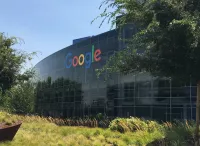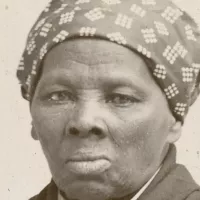Myspace was a pioneering social networking service launched in 2003. It achieved global reach, becoming the largest social network from 2005 to 2009. It significantly impacted technology, pop culture, and music. Myspace also served as an early platform, facilitating the growth of companies like YouTube, Zynga, RockYou, and Photobucket, contributing to the early development of the social web.
2002: MySpace.com Intended Use
Until 2002, the MySpace.com domain was intended for use as an online data storage and sharing site by YourZ.com, Inc.
June 2003: Jeffrey Edell Appointed Chairman of Intermix Media
In June 2003, just prior to the launch of MySpace, Jeffrey Edell was appointed as chairman of Intermix Media, the parent company.
August 1, 2003: Myspace Launched
On August 1, 2003, Myspace, a social networking service, was launched. It became the first social network to reach a global audience, influencing technology, pop culture, and music, and playing a role in the growth of companies like YouTube and Zynga.
August 2003: MySpace Development
In August 2003, eUniverse employees created the first version of MySpace within 10 days, using ColdFusion, mimicking features from Friendster.
2003: Transition to Social Networking Site
By late 2003, the MySpace.com domain, initially intended for online data storage, transitioned into a social networking site.
February 2005: MySpace Rejects Facebook Acquisition Offer
In February 2005, MySpace rejected Mark Zuckerberg's offer to sell Facebook to them for $75 million, a decision that would later be viewed as a missed opportunity.
January 2006: Fox Announces UK Version of MySpace
In January 2006, Fox announced plans to launch a UK version of MySpace, expanding its international presence.
January 2006: MySpace Growth in Early 2006
In January 2006, MySpace was signing up 200,000 new users a day, indicating a period of rapid growth.
June 2006: Myspace Becomes Most Visited Website in the U.S.
In June 2006, Myspace surpassed Yahoo and Google to become the most visited website in the United States, marking a peak in its popularity.
August 9, 2006: 100 Millionth MySpace Account Created
On August 9, 2006, the 100 millionth MySpace account was created in the Netherlands, marking a significant milestone.
October 2006: MySpace Revenue Growth
By October 2006, MySpace had grown to generating $30 million in revenue per month, half of which came from the Google deal.
November 2006: Myspace Announces Joint Venture with Softbank
In November 2006, Myspace announced a 50-50 joint venture with Softbank to launch the site in Japan, further expanding its international reach.
2006: Investigation into Children's Exposure to Pornography on MySpace
In 2006, Connecticut Attorney General Richard Blumenthal launched an investigation into children's exposure to pornography on MySpace, leading to a negative reputation.
2006: MySpace's Strongest Audience
In 2006, teenagers were MySpace's strongest audience, contributing to the platform's peak popularity.
July 2007: MySpace's European Dominance
By July 2007, Nielsen//NetRatings reported that MySpace's active reach was significantly higher than Facebook's in several European countries, highlighting its dominance in Europe.
November 1, 2007: MySpace Joins OpenSocial Alliance
On November 1, 2007, MySpace joined the Google-led OpenSocial alliance, aiming to promote common standards for software developers for social networks.
2007: MySpace Leading Social Network
By late 2007, MySpace was the leading social networking site, consistently outperforming Facebook in traffic.
2007: MySpace Partners with Sony BMG
In 2007, MySpace partnered with Sony BMG to put music directly on the platform, leveraging its user base and Sony's music content.
2007: MySpace's Strongest Audience
In 2007, teenagers were MySpace's strongest audience, contributing to the platform's peak popularity.
2007: MySpace Valued at $12 Billion
In 2007, when News Corporation considered merging it with Yahoo!, Myspace was valued at $12 billion and had more than 300 million registered users, marking a peak in its perceived value.
April 2008: Myspace Peak Visitors
In April 2008, Myspace reached its peak with 115 million monthly visitors. Facebook had a similar number of visitors at the time, but more global users.
April 19, 2008: Facebook Overtakes MySpace in Alexa Rankings
On April 19, 2008, Facebook overtook MySpace in Alexa rankings, indicating a shift in popularity.
2008: MySpace Leading Social Network
Into 2008, MySpace was considered the leading social networking site, consistently beating out its main competitor Facebook in traffic.
March 2009: Catalyst for Management Shakeup
In March 2009, A meeting at News Corporation over the direction of MySpace reportedly was the catalyst for management shakeup
April 2009: MySpace Executive Team Shakeup
In April 2009, Jonathan Miller shuffled MySpace's executive team, replacing Chris DeWolfe with Owen Van Natta as CEO.
May 2009: Facebook Surpasses MySpace in U.S. Visitors
In May 2009, Facebook surpassed MySpace in the number of unique U.S. visitors, contributing to MySpace's consistent loss of membership.
May 2009: Facebook Surpasses Myspace
In May 2009, Facebook surpassed Myspace in the number of unique U.S. visitors, signaling a decline for Myspace.
June 2009: MySpace Layoffs and Executive Departures
In June 2009, MySpace underwent a layoff of 37.5% of its workforce and key executives departed, reflecting internal challenges.
June 2009: Myspace Workforce in June 2009
In June 2009, Myspace had approximately 1,600 employees, representing its operational capacity at the time.
2009: MySpace Site Redesigns
In 2009, MySpace implemented site redesigns in an attempt to get users back, but it may have backfired due to user resistance to changes.
June 2010: Specific Media Group and Justin Timberlake Purchase Myspace
In June 2010, Specific Media Group and Justin Timberlake jointly purchased Myspace for approximately $35 million, marking a significant change in ownership.
2012: Focus on Monetization over Long-Term Strategy
In 2012, Katz described how News Corporation had put significant pressure on MySpace to focus on near-term monetization, as opposed to thinking about long-term product strategy.
February 11, 2016: Time Inc. Acquires Myspace
On February 11, 2016, Myspace and its parent company were purchased by Time Inc. for $87 million, representing another change in ownership.
January 31, 2018: Meredith Corporation Purchases Time Inc.
On January 31, 2018, Time Inc. was purchased by Meredith Corporation, impacting Myspace's ownership structure.
November 4, 2019: Viant Technology LLC Acquires Myspace
On November 4, 2019, Meredith spun off Myspace and sold it to Viant Technology LLC, marking the latest change in ownership.
2019: Myspace Monthly Visitors in 2019
As of 2019, Myspace had seven million monthly visitors, a significant drop from its peak years.
2022: Myspace radio player ceases functioning
In early 2022, the Myspace radio player, which previously allowed users to stream various channels via the Myspace desktop website, stopped functioning.
Mentioned in this timeline

Mark Zuckerberg is an American businessman and programmer best known...
Facebook is a social media and networking service created in...

Google LLC is a multinational technology company specializing in online...

An apple is a widely cultivated edible fruit originating in...

San Francisco is a major commercial financial and cultural hub...
Japan is an East Asian island country situated in the...
Trending
Jo'Quavious Dequane Woody Marks is an American professional football running back for the Houston Texans of the NFL He played...

8 months ago Nick Chubb declares he's just getting started amidst free agency, addressing future plans.

2 months ago Jon Hamm: From Mad Men to a Beloved Actor

1 month ago Saints WR Shaheed Trade Rumors Swirl Amid Olave Interest Before NFL Deadline.

6 months ago Trump's White House Rose Garden Paving Sparks Controversy After Melania's Redesign; Bulldozing Begins.
4 months ago Jack Bech Impresses at Raiders Training Camp, Showcasing Skill Set and Potential Impact.
Popular
Matt and Ross Duffer known as the Duffer Brothers are...
Aftyn Alyssa Behn is an American politician currently serving as...

Candace Owens is an American conservative political commentator and author...

XXXTentacion born Jahseh Dwayne Ricardo Onfroy was a controversial yet...

Ilhan Omar is an American politician currently serving as the...

Harriet Tubman was a pivotal American abolitionist and social activist...